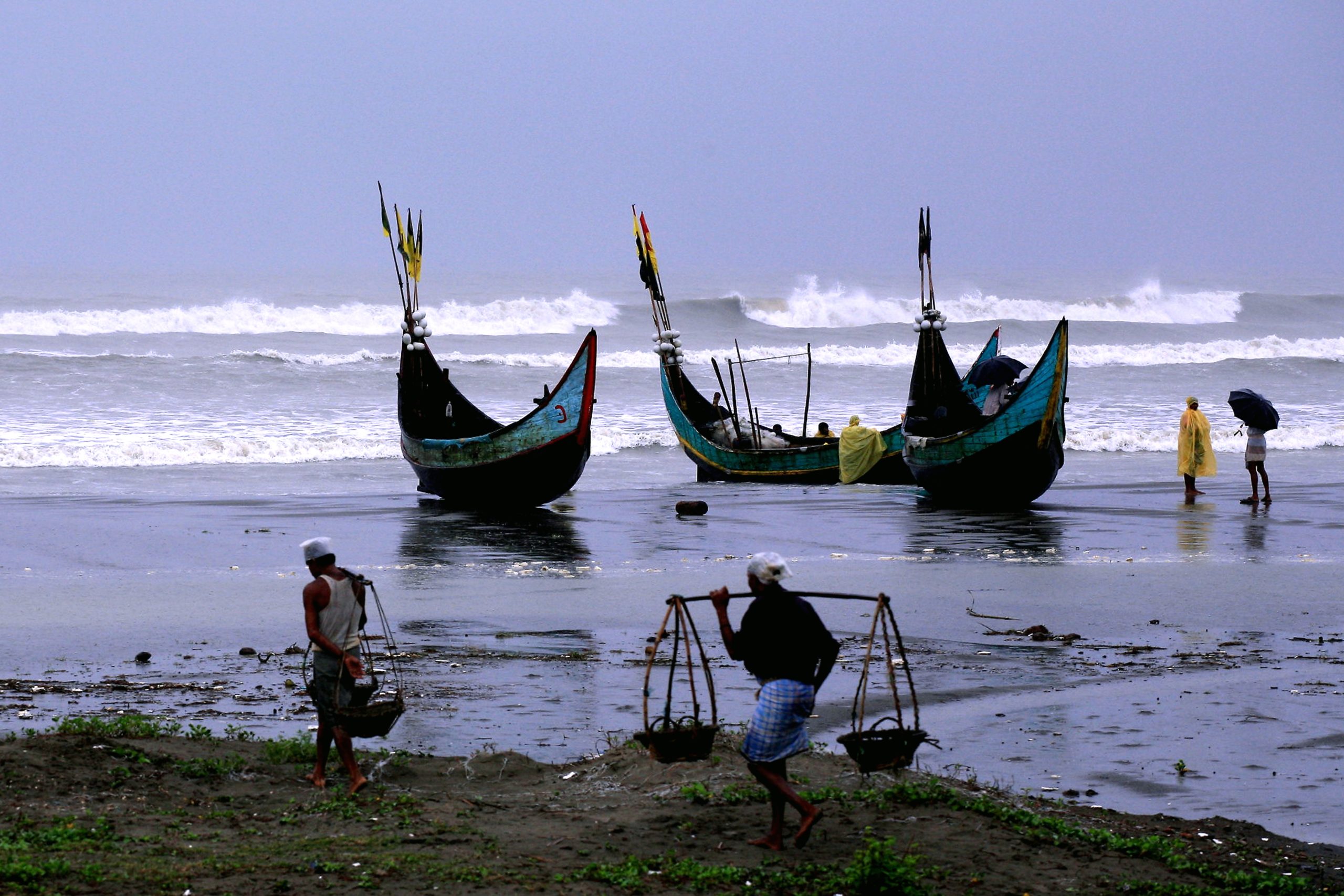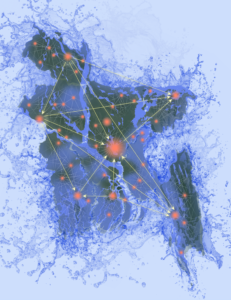Migrants leaving the coast may trigger waves of migration throughout the country
27 April 2021

Migration away from coastal regions in Bangladesh due to sea-level rise is predicted to create a cascade of effects across the country.
Credit: Pixabay/khurshid alam
AGU press contact:
Liza Lester, +1 (202) 777-7494, [email protected] (UTC-4 hours)
Contact information for the researchers:
Maurizio Porfiri, New York University, [email protected], (UTC-4 hours)
WASHINGTON— People living in low-lying coastal regions in Bangladesh are already moving to escape sea-level rise. A new study predicts the cascading effects of this migration will ultimately affect 1.3 million people across the country by 2050.
The new study presents a mathematical model of human migration that considers not just economic factors but also human behavior—whether people are unwilling or unable to leave and if they later return home. It also considers the cascading effects of migration, as migrants repeatedly move to find new opportunities and original inhabitants are displaced.
The findings are published in Earth’s Future, AGU’s journal for interdisciplinary research on the past, present and future of our planet and its inhabitants.
“We are not only looking at a snapshot, but we are trying to reconstruct the trajectory of the migration and looking at its evolution,” said senior author Maurizio Porfiri, an engineer at the Center for Urban Science and Progress at the New York University Tandon School of Engineering.

Human migration away from flood zones to inland cities in Bangladesh.
Credit: Anna Sawulska and Maurizio Porfiri
According to the new model, the districts in the south along the Bay of Bengal will be the first to be impacted by sea-level rise, causing a migration that will ripple across the country and affect all 64 districts. Some migrants will likely be rejected by the existing residents—or displace them—triggering further migrations. While the population of the capital, Dhaka, initially will surge, the results suggest that movement away from the inundated capital region will ultimately cause its population to shrink.
Bangladesh is especially susceptible to sea-level rise because it is a low-lying country crisscrossed with rivers and already experiences frequent flooding during the summer monsoon season. Its coastline on the Bay of Bengal measures about 580 kilometers (360 miles), with a large portion consumed by the Ganges river delta. An estimated 41 percent of its 163 million people live at elevations lower than 10 meters (about 32 feet).
The authors emphasize that the new model can be used to study migration in response to any environmental disturbance that causes unrest, such as droughts, earthquakes or wildfires. Additionally, it is relatively simple and can make reliable predictions based on little data.
Human dimension to economic models
The new model builds on a previous human migration model that focused on economic migrants in Bangladesh and it uses the same set of geographic and demographic data.
The previous study predicted that the central region of Bangladesh, including its capital, Dhaka, would receive the greatest number of migrants. The new study agrees, but finds that the ripple effects from that migration will ultimately cause people to leave the capital, leading to a population decline.
“Accurately predicting migration flows in data-limited settings will be critical for avoiding conflict and resource scarcity in likely destinations,” said Kyle Davis, an environmental data scientist at the University of Delaware. Davis was a lead author on the previous migration model but was not involved in the new work. “This study provides an important step towards ensuring that migration occurs sustainably and in a way that ensures human welfare.”
Worldwide, more than 600 million people living in coastal regions are at risk of being displaced by sea-level rise due to climate change. Flooding from tropical cyclones and saltwater intrusion into groundwater is also robbing people of their homes and livelihoods.
The outputs from the model can help governments plan and prepare for the impacts of sea-level rise and other environmental disturbances by allocating resources to the most hard-hit regions and ensuring that cities are adequately equipped to deal with the influx of migrants.
“Mathematical modeling is the only way we have to ground our future decisions,” said first author Pietro De Lellis, an engineer at the University of Naples Federico II. “Migration has lots of sources—environmental disasters, political tensions—but in the end, we need to use science to provide useful tools for decision-makers.”
###
AGU (www.agu.org) supports 130,000 enthusiasts to experts worldwide in Earth and space sciences. Through broad and inclusive partnerships, we advance discovery and solution science that accelerate knowledge and create solutions that are ethical, unbiased and respectful of communities and their values. Our programs include serving as a scholarly publisher, convening virtual and in-person events and providing career support. We live our values in everything we do, such as our net zero energy renovated building in Washington, D.C. and our Ethics and Equity Center, which fosters a diverse and inclusive geoscience community to ensure responsible conduct.
Notes for Journalists:
Earth’s Future is an open access journal. Download a PDF copy of the paper here. Neither the paper nor this press release is under embargo.
Paper title:
“Modeling human migration under environmental change: a case study of the effect of sea level rise in Bangladesh”
Authors:
- Pietro De Lellis (Department of Information Technology and Electrical Engineering, University of Naples Federico II, 80125 Naples, Italy)
- Manuel Ruiz Marín (Department of Quantitative Methods, Law and Modern Languages, Technical University of Cartagena, 30201 Cartagena, Murcia, Spain)
- Maurizio Porfiri, corresponding author (Center for Urban Science and Progress, Department of Mechanical and Aerospace Engineering, and Department of Biomedical Engineering, New York University Tandon School of Engineering, Brooklyn, NY, US; Department of Quantitative Methods, Law and Modern Languages, Technical University of Cartagena, 30201 Cartagena, Murcia, Spain)